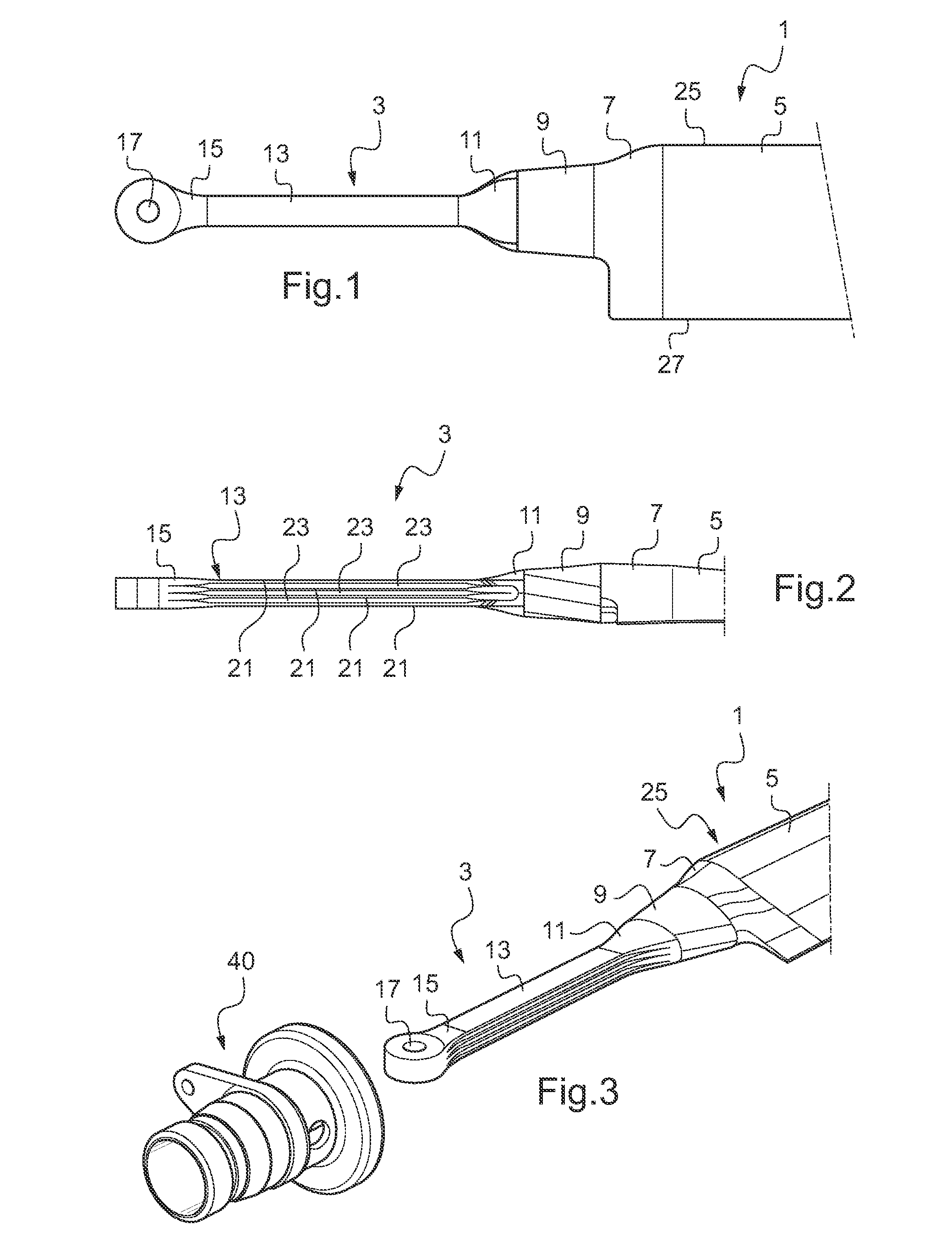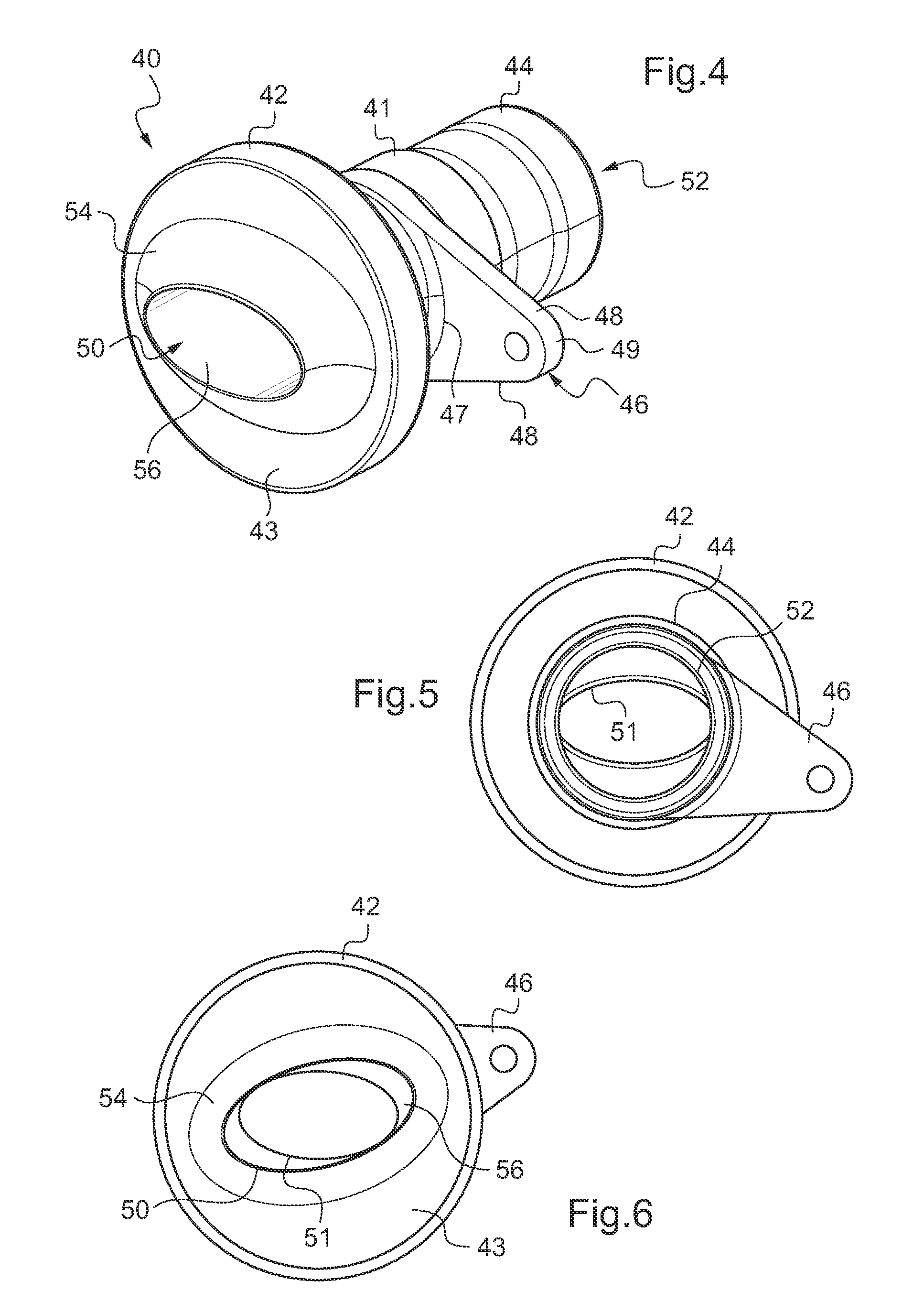Rotor blade with control tube
- Summary
- Abstract
- Description
- Claims
- Application Information
AI Technical Summary
Benefits of technology
Problems solved by technology
Method used
Image
Examples
Embodiment Construction
[0040]A rotor wing (only partially shown in FIG. 1) includes a rotor blade 1 and a tension-torque-transmission element 3. The tension-torque-transmission element 3 connects the rotor blade 1 to the hub of a drive device (not shown). The rotor blade 1 and the tension-torque-transmission element 3 are designed in a single piece, wherein from a blade section 5 of the rotor blade 1 on the hub side a blade transition section 7 follows on, which in turn is adjoined by a conical coupling section. It comprises a torque-transmission section 9 from which the tension-torque-transmission element 3 follows on with a blade-side connecting section 11, which in particular in top view makes a strongly conical transition to a significantly slimmer rectangular torque-transmission element 13. The latter expands to form a club-shaped connecting section 15 on the hub side, which connecting section 15 accommodates a circular connecting eye 17 that extends perpendicularly through said connecting section 15...
PUM
 Login to View More
Login to View More Abstract
Description
Claims
Application Information
 Login to View More
Login to View More - R&D
- Intellectual Property
- Life Sciences
- Materials
- Tech Scout
- Unparalleled Data Quality
- Higher Quality Content
- 60% Fewer Hallucinations
Browse by: Latest US Patents, China's latest patents, Technical Efficacy Thesaurus, Application Domain, Technology Topic, Popular Technical Reports.
© 2025 PatSnap. All rights reserved.Legal|Privacy policy|Modern Slavery Act Transparency Statement|Sitemap|About US| Contact US: help@patsnap.com



